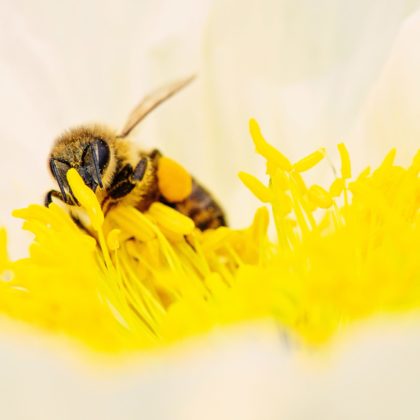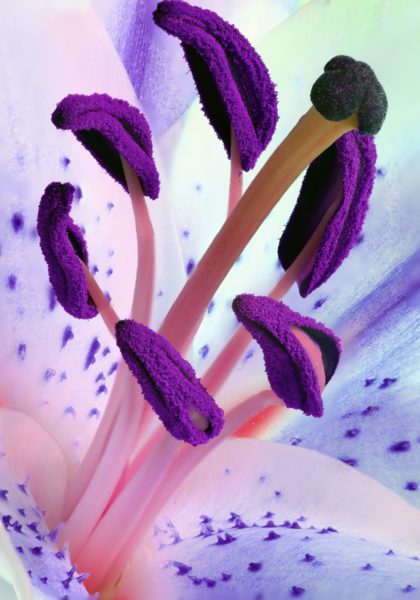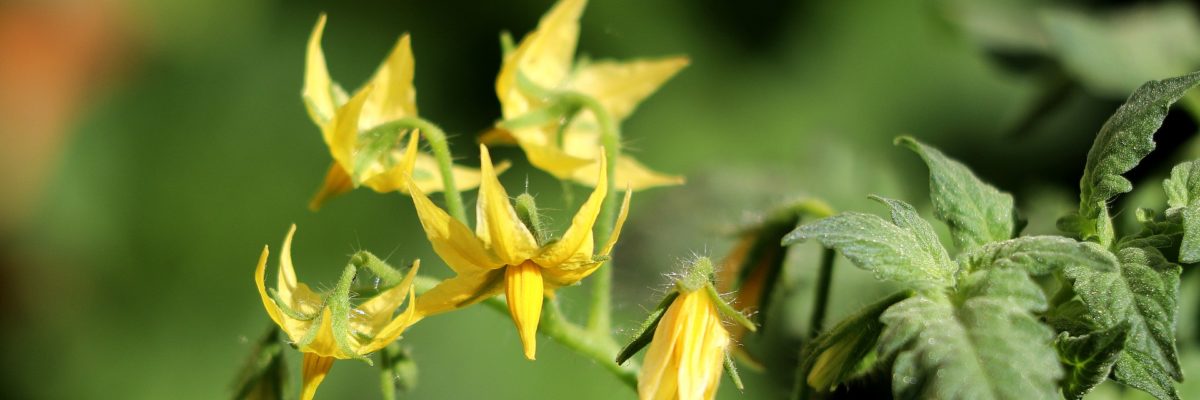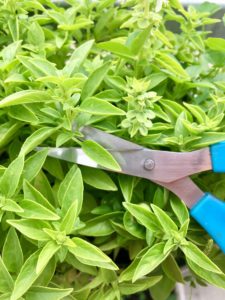Growing plants in hydroponics has many advantages. Unfortunately, effortless, hands off pollination is not one of them. Hand pollinating plants is necessary if you grow fruiting plants indoors. Outdoors, natural pollinators like bees, butterflies, hummingbirds, and so on, take care of it for you. Yes, there are some self-fertile types that fruit without pollination. Chances are though, you are not growing one of those varieties.
Why Hand Pollinate Your Plants?
Unless you’re growing a fruiting crop simply because the flowers look nice, you need to manually pollinate flowers. Otherwise, don’t count on getting a good yield or even a harvest, really.
Plants flower and spread pollen as part of their reproductive stage. They’re making sure their genes live on in new growth from the seeds they produce. For fruiting plants, like tomatoes, apples, cucumbers, etc., they spread seeds by encasing them in the fruit they produce.
While you may not be looking to continue your plants’ genetic legacies, you do need them to fruit so you have a crop to harvest. For most, if they don’t get the signal to reproduce (i.e. through pollination), they don’t move onto the next phase of reproduction (fruiting). Indoors, it’s up to you to take on the job of hand pollinating plants.

Anatomy of a Flower – an Overview
Pollination isn’t that hard, but you need to know a little something about how flowers are formed, and their different components. Once you know what to look for, hand pollinating plants is much easier.
The stigma
Stigmas are part of the female flower, and they’re actually just above the plants ‘ovaries.’ While the term may not be familiar, you’ve definitely seen the stigma. You know those (usually bright) thin, stem-like things coming from the center of the flower? The one in the very middle is the stigma.
The stamens
Stamens are the male flower parts of the plant. Again, you may not know the term, but if you can locate the stigma, you’ve seen the stamens. All around the stigma there are other, smaller filaments surrounding it. These are the stamens. Their job is producing male pollen, usually a powdery, yellowish dust.
Many plants contain both in one flower. It’s far less common to see those that have male and female flowers in different spots. When they contain both male and female parts (stigma and stamens), things get more complicated, and easier. Some of them are even considered self-fertile, meaning that they essentially pollinate themselves. Others may still be considered self-fertile but need pollen from another plant.

3 Ways to Hand Pollinate
Just like plants outdoors can be pollinated through different means, so can those growing indoors. Every grower has their favorite method, but there are still a few different ways you can choose from. There’s the fan method, plant shaking, and manually brushing pollen among your flowers. Here’s what you need to know about each:
Using a fan
Some plants are quite generous with their pollen, and as a result, it spreads easily. Outside, even a mild breeze could spread pollen from one plant to another. So, you take this principle, and use it in your grow room. When they’re flowering, put a fan in the growing area. It does not need to be on full blast, a light to moderate speed is fine. Even better, use an oscillating fan (one that rotates as it blows air). The change of movement helps distribute pollen evenly, and ensures each plant gets pollinated.
What you need:
- A fan (preferably with different power settings, and oscillation)
- That’s it.
Shaking plants
This is the second easiest way to pollinate indoors. Now, keep in mind it’s not ideal for your average house plant. If you want to use this method, make sure your plants are strong enough to handle it. You will not shake them hard, but it’s better to avoid breaking a main stem and damaging your plant.
It really is a self-explanatory method. Once your plants flower, gently shake the main (terminal) stems. Shake one plant and move onto the next until you’ve shaken all of them. Then, repeat the process every couple of days. The idea is to stir up pollen so it can fall on other plants’ flowers.
Tip: if you also run a fan while you’re shaking, you’ll get even better results.
What you need:
- Gloves (or clean hands)
- A fan (optional)
Manual pollination
While this is the most effort intensive way to pollinate indoor plants, it also gives the highest success rate. Yes, it takes more time, but that’s because it’s also more thorough. If you’re looking for a fail safe way to pollinate, this is it.
Find a soft, small (very small, in fact) paintbrush. Please avoid using paint brushes that you’ve used for anything else. Even if you think it is perfectly clean, tiny particles of dust, dirt, paint, or even cleaners can stick in the bristles.
Take the paint brush and lightly swab the center of the flower. Start from the deepest part and swipe around, gradually making your way up to the stamen. Then, move onto the next flower. Then, once you’ve brushed all the flowers on one plant, move to the next and repeat the whole process. Because the soft bristles pick up pollen, you’re actually transferring pollen from flower to flower and plant to plant.
This process doesn’t need to be repeated as often, or constantly, as the fan or shaking method. Still, it’s a good idea to do it every few days at least.
What you need:
- Small, very fine and soft paintbrush (not used previously)
- Gloves (optional)
- Fan (optional, but still helpful)
How Do You Know if Your Hand Pollinating Worked?

Aside from the obvious (your plants produce fruit or seeds), there are a couple key indicators that your hand pollination succeeded or failed. If you catch the signs fast enough, you might still be able to pollinate remaining flowers and harvest some fruit.
Most plants don’t take a long time to show signs of successful pollination. Like with anything else in the growth process, it does depend on the specific plant, though.
If flowers simply drop off, chances are that it did not work. All is not lost, however. It doesn’t mean your plant is going to die. It just means that you’ll have to wait until they flower again, and you won’t be harvesting fruit until after they do.
It’s pretty easy to tell if your hand pollination worked. While your plants will lose their flowers, don’t let it alarm you. Even after a successful pollination, it’s normal. What you need to do is look around the base of the flowers (where they join with the stem). Little buds start growing where the flower was, and these are what develops into the fruit.
Frequently Asked Questions
Can you use Q-tips to hand pollinate flowers?
Q-tips are one of the more common tools for manually pollinating flowers. If you use the ‘paint brush’ method, you can actually use a cotton swab instead. However, some growers tend to avoid using them, simply because they’re so fibrous, and can end up holding onto more pollen than they transfer. That isn’t to say you cannot use Q-tips, but a paint brush does distribute pollen better.
How do you hand pollinate plants with separate male and female flowers?
This one is a little trickier. You can use the paint brush method to transfer pollen, just make sure you’re moving it from male flowers to female flowers. Like with other plants, you’ll see stamens inside the male flower. Female flowers have their stigma. A female flower also often blooms a little later and may even have the beginning bulbs of fruit at their base. For an easier way to pollinate, pluck a male flower, take the petals off, and brush the stamens lightly on the stigma of a female flower. You may need to pluck a few male flowers to make it around your grow room/greenhouse.



